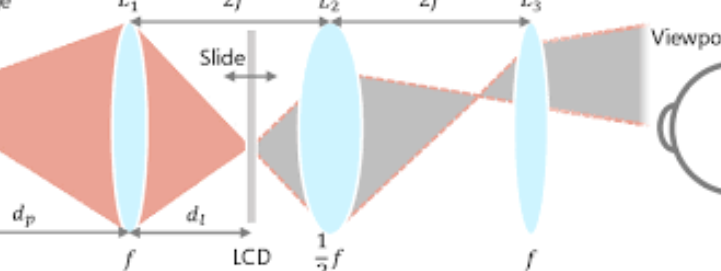Varifocal Occlusion for Optical See-Through Head-Mounted Displays using a Slide Occlusion Mask
PubDate: March 2019
Teams: Keio University;Tokyo Institute of Technology
Writers: Takumi Hamasaki; Yuta Itoh
PDF: Varifocal Occlusion for Optical See-Through Head-Mounted Displays using a Slide Occlusion Mask

Abstract
We propose a varifocal occlusion technique for optical see-through head-mounted displays (OST-HMDs). Occlusion in OST-HMDs is a powerful visual cue that enables depth perception in augmented reality (AR). Without occlusion, virtual objects rendered by an OST-HMD appear semi-transparent and less realistic. A common occlusion technique is to use spatial light modulators (SLMs) to block incoming light rays at each pixel on the SLM selectively. However, most of the existing methods create an occlusion mask only at a single, fixed depth-typically at infinity. With recent advances in varifocal OST-HMDs, such traditional fixed-focus occlusion causes a mismatch in depth between the occlusion mask plane and the virtual object to be occluded, leading to an uncomfortable user experience with blurred occlusion masks. In this paper, we thus propose an OST-HMD system with varifocal occlusion capability: we physically slide a transmissive liquid crystal display (LCD) to optically shift the occlusion plane along the optical path so that the mask appears sharp and aligns to a virtual image at a given depth. Our solution has several benefits over existing varifocal occlusion methods: it is computationally less demanding and, more importantly, it is optically consistent, i.e., when a user loses focus on the corresponding virtual image, the mask again gets blurred consistently as the virtual image does. In the experiment, we build a proof-of-concept varifocal occlusion system implemented with a custom retinal projection display and demonstrate that the system can shift the occlusion plane to depths ranging from 25 cm to infinity.


